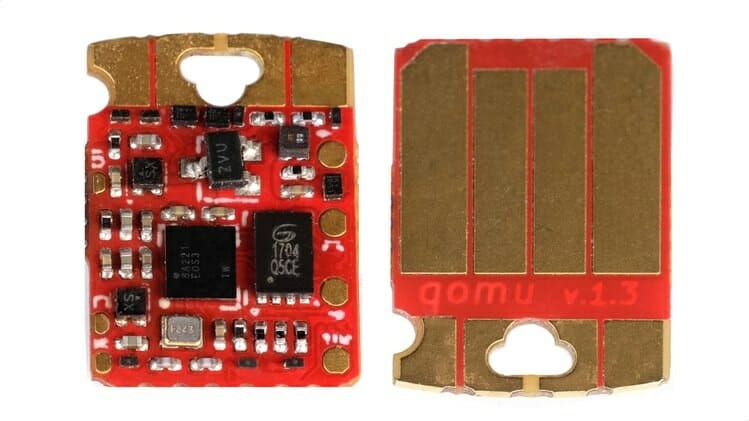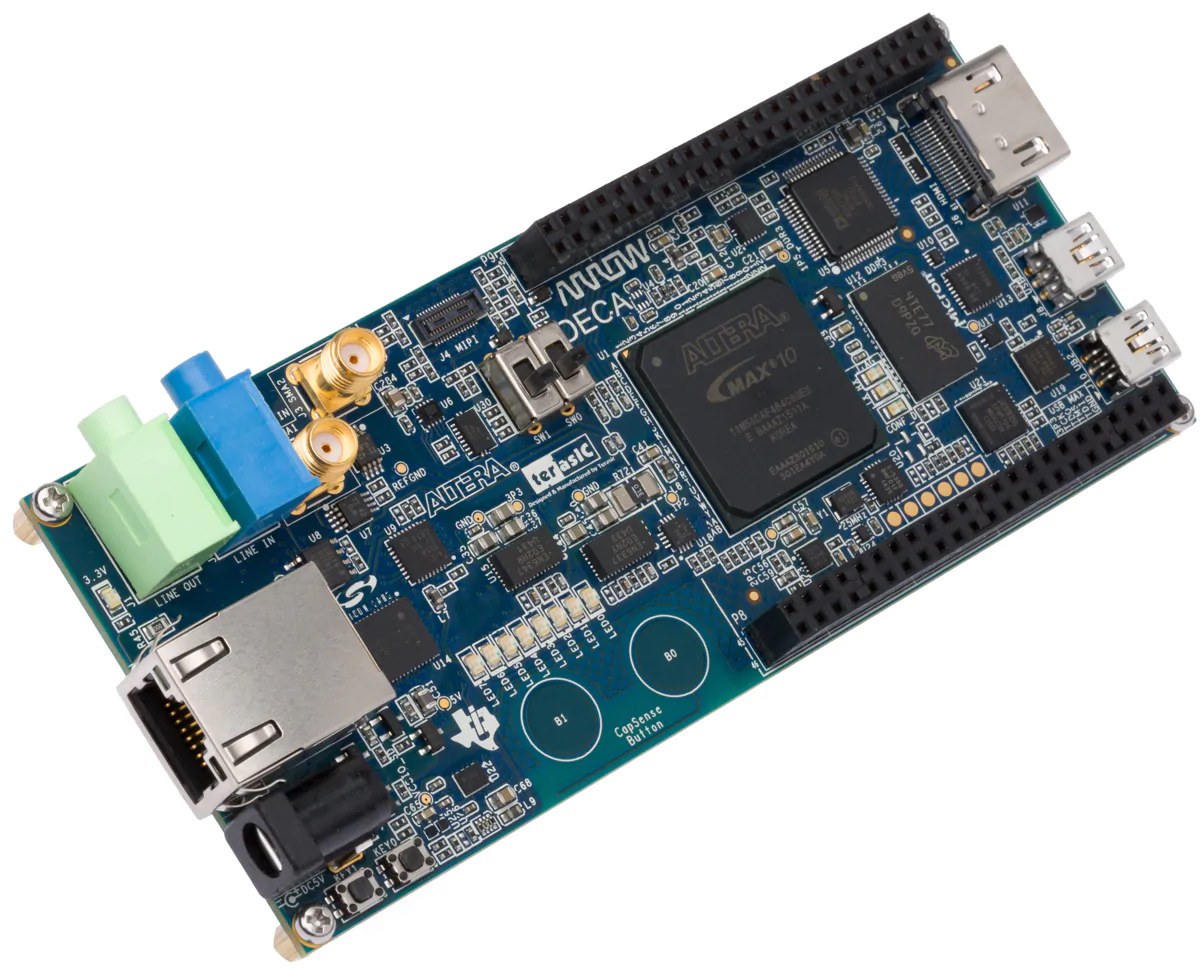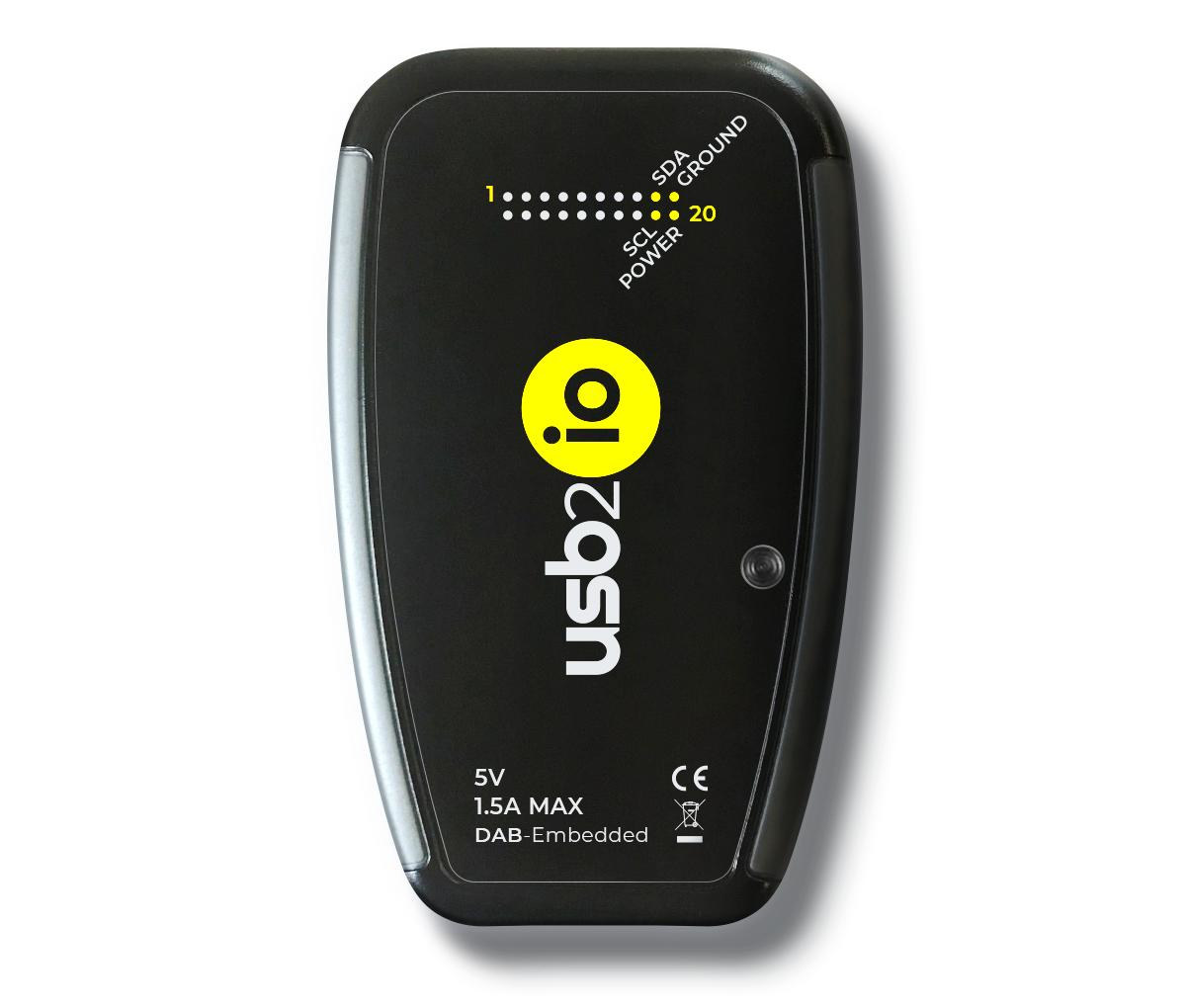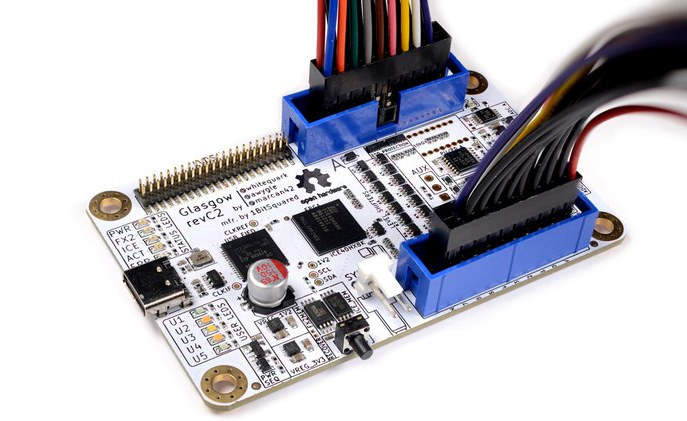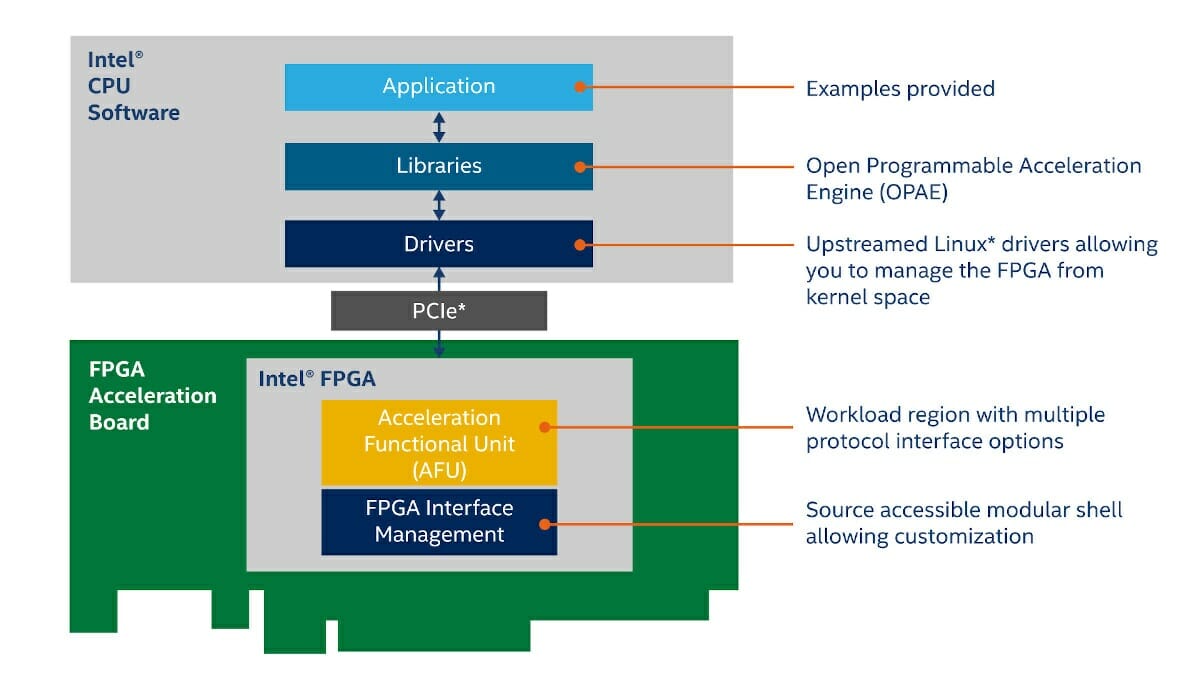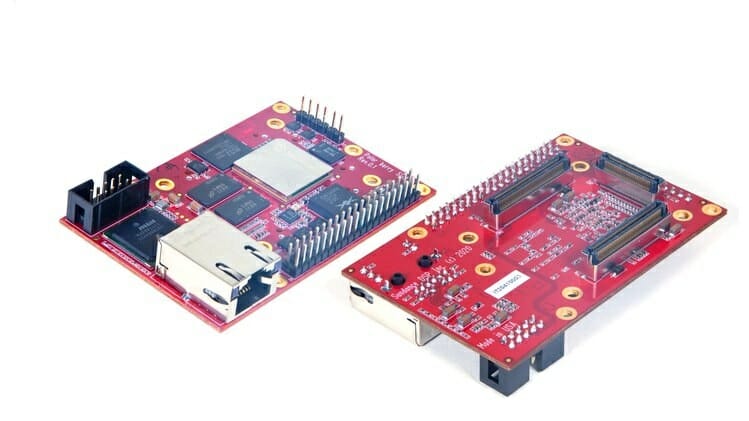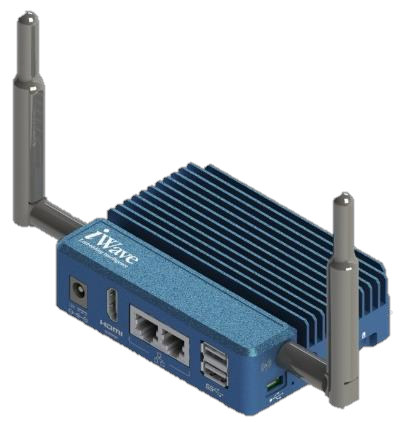We’ve seen several tiny “omu” USB boards that are the size of a USB connector in the past, starting with Tomu based on Silabs EFM32 Arm-Cortex-M0+ MCU, then Fomu enabling Python programming and RISC-V softcore on a Lattice ICE40 FPGA, and finally Somu FIDO2 security key. There’s now the new Qomu board based on Quicklogic EOS S3 Cortex-M4F MCU with embedded FPGA. Just like its predecessor, the board almost completely fits in a USB connector except for the touch pads, and also happens to be programmable with Symbiflow that dubs itself as the “GCC of FPGAs”, as well as other open-source tools. Qomu specifications: SoC – QuickLogic EOS S3 Arm Cortex-M4F MCU @ up to 80 MHz with 512 KB memory, embedded FPGA with 2,400 effective logic cells and 64 Kbits of embedded RAM Storage – 16 Mbit flash Misc – Four capacitive touch pads, 1x RGB LED Power – […]
Arrow DECA Max 10 FPGA development board offered for $37 (Promo)
Arrow DECA evaluation board, featuring Altera’s MAX 10 FPGA and Enpirion power solutions, was launched in March 2015 and sold for around $169 at the time. Time has passed with Intel purchasing Altera FPGA business later that year, and the price of the board dropped to $65 as listed on Intel website. But now Arrow is offered the DECA FPGA for just $37, and you can also get fast free shipping if you’re a member of ArrowPerks loyalty program. Arrow DECA development board specifications: FPGA – Intel MAX 10 (10M50DAF484C6G) device with 50K logic elements, 1,638 Kbit block memory, 5,888 Kbits user flash memory, 4x PLLs System memory – 512MB DDR3 SDRAM (16-bit data bus) Storage – 64MB QSPI Flash, MicroSD card socket Video Output – HDMI v1.4 including 3D video support Audio – 24-bit audio CODEC with line-in, line-out jacks Camera – MIPI connect for camera module Connectivity – […]
USB2IO high-speed interface explorer tool combines Intel Cyclone 10 FPGA and STM32H7 MCU
In the second part of 2020, we’ve seen a fair amount of USB debugging tools for electronics designers and hardware hackers including the Glasgow Interface explorer with an ICE40 FPGA. But if you need even more flexibility or higher I/O speeds (up to 300 MHz), DAB Embedded USB2IO interface explorer should help thanks to the combination of an STMicro STM32H7 MCU and an Intel Cyclone 10 FPGA. USB2IO interface explorer hardware specifications: MCU – STMicro STM32H743 Arm Cortex-M7 @ 480MHz CPU clock An external 64MB QSPI flash for extra FPGA code storage; FPGA – Intel Cyclone 10LP (10CL040) with 40k logic elements, 1,134 Mbit embedded memory, 126 DSP blocks External memory – 32MB SDRAM for MCU and FPGA (64MB in total) Storage – 64MB QSPI for connected to MCU for FPGA code storage I/Os via 20-pin external header/connector 16 x GPIO mode (single-ended), 8x LVDS pair mode or a mix […]
Glasgow Interface Explorer is an iCE40 FPGA based hardware debugging tool (crowdfunding)
We’ve seen some pretty interesting boards for hardware hackers and reverse engineers in recent months with the likes of Ollie and Tigard USB debug boards that allow interfacing various hardware interfaces and/or flashing firmware to different types of target boards. Here’s another one: Glasgow Interface Explorer. Based on Lattice Semi iCE40 FPGA, the board is described as being “designed for hardware designers, reverse engineers, digital archivists, electronics hobbyists, and anyone else who wants to communicate with a wide selection of digital devices with minimum hassle”. Glasgow Interface Explorer specifications: FPGA – Lattice Semiconductor iCE40HX8K FPGA USB – 1x USB-C port connected to FX2 high-speed USB interface capable of 480 Mbps throughput I/O headers 2x 8-channel I/O banks with 16 highly flexible I/O Each I/O bank comes with A dedicated programmable linear voltage regulator, configurable from 1.8 V to 5 V and providing up to 150 mA of power A dedicated […]
Intel unveils eASIC N5X Structured ASIC, and the Open FPGA Stack
Intel’s virtual FPGA Technology Day 2020 is taking place today, and the company made two announcements before the event. First, the company introduced the new Intel eASIC N5X structured eASIC family with an Intel FPGA compatible hard processor system to design to quickly create applications across 5G, artificial intelligence, cloud, and edge workloads. In addition, Intel also announced the Intel Open FPGA Stack (aka Intel OFS), a scalable, open-source (intel calls it “source-accessible”) hardware and software infrastructure available through git repositories design to ease the work of hardware, software, and application developers. Intel eASIC N5X eASIC N5X is the first structure ASIC from the company to integrate an Intel FPGA compatible Quad-core Armv8 hard processor system. The new chips will help customers bring custom solutions faster to market compared to traditional ASICs thanks to the FPGA fabric, and at a cheaper cost and with up to 50% lower core power […]
Precursor is a mobile, open hardware, dual FPGA development kit (Crowdfunding)
Sutajio Ko-usagi PTE LTD has launched some interesting hardware on Crowd Supply over the years include Novena open-source hardware Arm laptop, and Fomu FPGA USB board. The company is now back with another project: Precursor, a mobile, open-source hardware devkit powered by not one, but two FPGA with Xilinx Spartan 7-Series FPGA, plus a super-low-power Lattice iCE40 UP5K FPGA for deep-sleep system management. The device also comes with a display, battery, and keyboard that make it looks like older Palm or Blackberry phones. Precursor FPGA devkit specifications: FPGA Xilinx XC7S50 primary System on Chip (SoC) FPGA with -L1 speed grade for longer battery life; tested with 100 MHz VexRISC-V, RV32IMAC + MMU, 4k L1 I/D cache Lattice Semi iCE40UP5K secondary Embedded Controller (EC) FPGA for power, standby, and charging functions; tested with 18 MHz VexRISC-V, RV32I, no cache System Memory – 16MB external SRAM Storage – 128MB flash Display -536 […]
PolarBerry is a Compact, Linux-capable RISC-V FPGA SBC and module (Crowdfunding)
SiFive may just have announced a mini-ITX motherboard for RISC-V PCs, but if you’d like a RISC-V Linux platform in a more compact form factor, Sundance PolarBerry may better fit your requirements, albeit the board will target different use cases. Powered by Microchip PolarFire RISC-V SoC FPGA, PolarBerry is both a single board computer with Gigabit Ethernet and 40-pin GPIO header, as well as a system-on-module thanks to three Samtec board-to-board connectors. PolarBerry specifications: SoC – Microsemi PolarFire FPGA MPFS250T-FCVG484 penta-core processor with 1x RV64IMAC monitor core, 4x RV64GC application cores, FPGA fabric with 254K x logic elements (4LUT + DFF), 784 x math blocks (18 x 18 MACC), and 16 x SERDES lanes at 12.5 Gbps; 12 W maximum power consumption System Memory – 4 GB of 32-bit wide DDR4 memory Storage – 4GB eMMC flash, 128 Mbit SPI Serial NOR flash for boot image Networking – Gigabit Ethernet […]
FPGA powered Corazon-AI gateway supports up to 8 IP cameras for video analytics
Earlier this year, we covered some video analytics solutions based on AAEON UP Xtreme Edge embedded computer combining an Intel Whiskey Lake processor with Intel Movidius Myriad X AI accelerator modules, as well as video management & analytics software solutions from Milestones & SAIMOS, or aotu.ai BrainFrame. iWave Systems has now introduced a similar solution with Corazon-AI gateway capable of handling up to 8 IP cameras in real-time, but instead of relying on AI accelerators, the company leverages Xilinx Zynq Ultrascale+ Arm Cortex-A53/R5 FPGA MPSoC for AI inference. Corazon-AI gateway specifications: SoC – Xilinz Zynq Ultrascale+ ZU2, ZU3, ZU4 or ZU5 MPSoC Processing System (PS) Quad/Dual Arm Cortex-A53 @ 1.5GHz, dual Cortex-R5 @ 600MHz Arm Mali-400MP2 GPU @ 677MHz H.264/H.265 Video Encoder/Decoder Programming Logic (PL) Up to 256K Logic cells PL GTH Transceivers x 4 @ 12.5 Gbps System Memory 64bit, 2GB DDR4 with ECC for PS (upgradable) 32bit, 1GB […]


